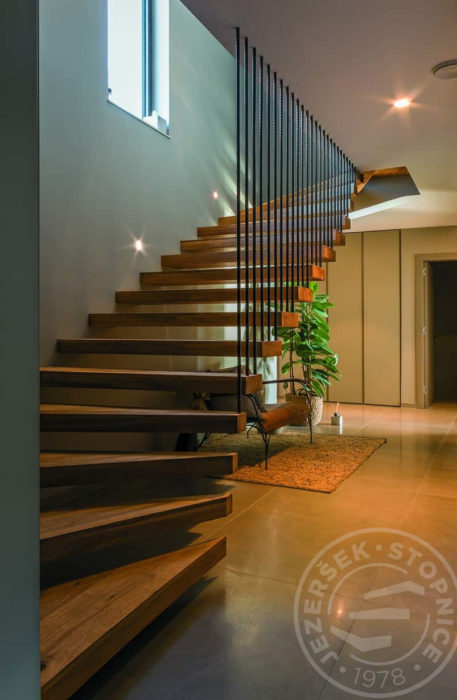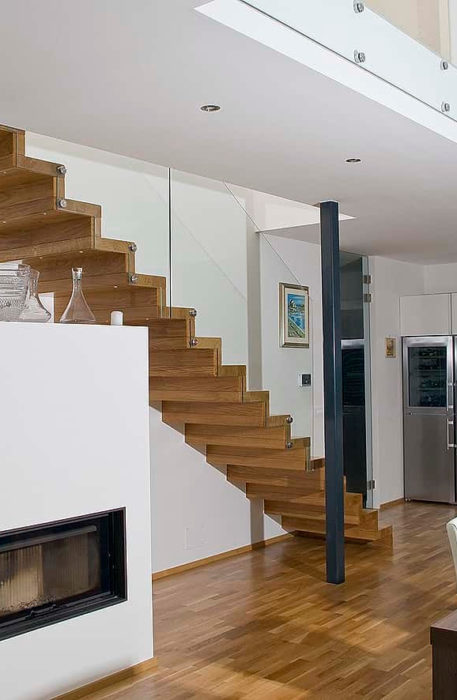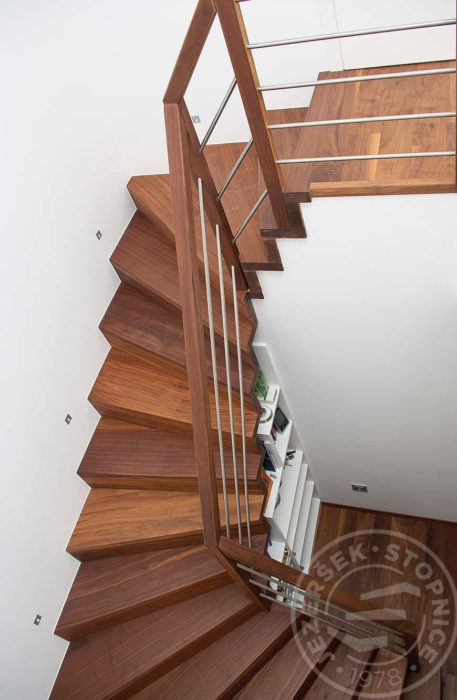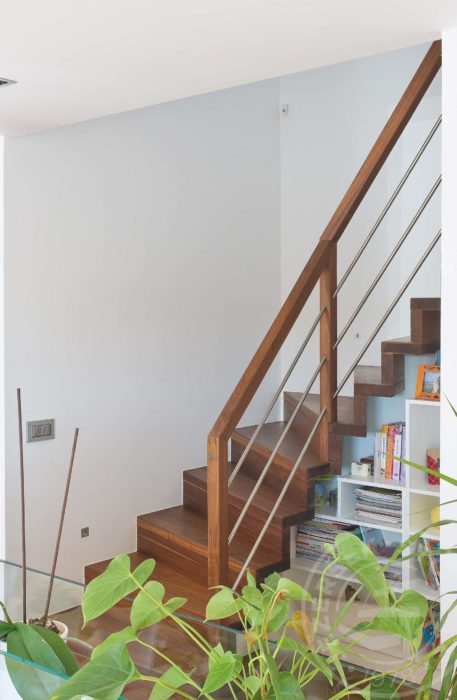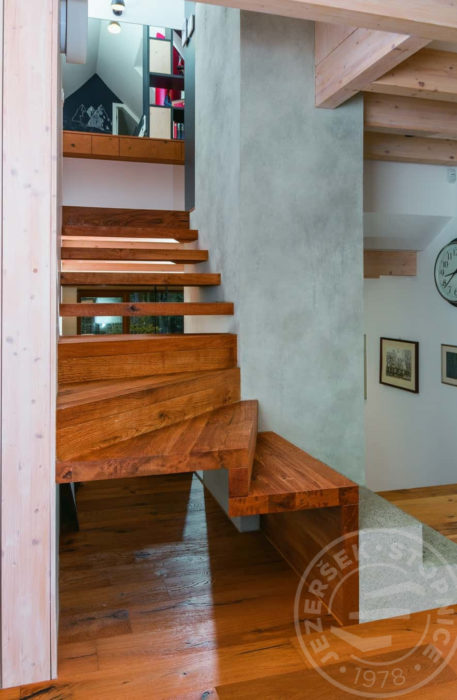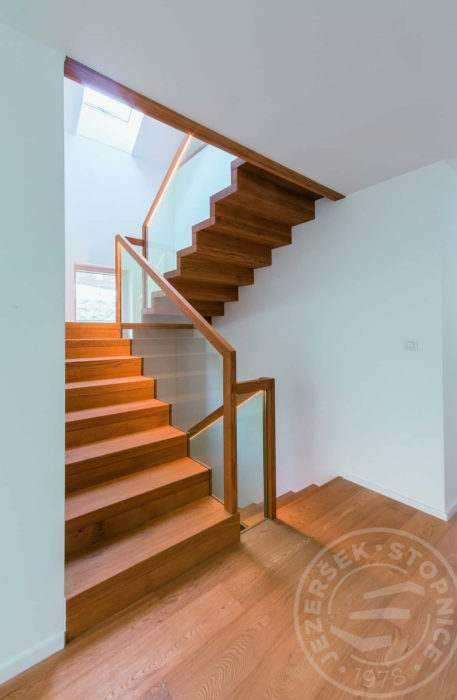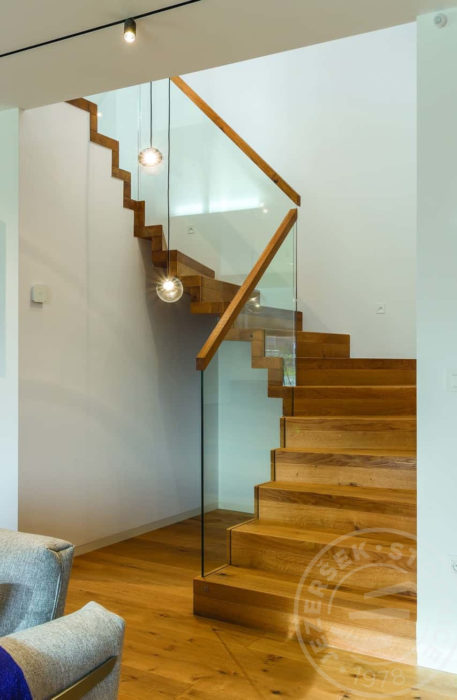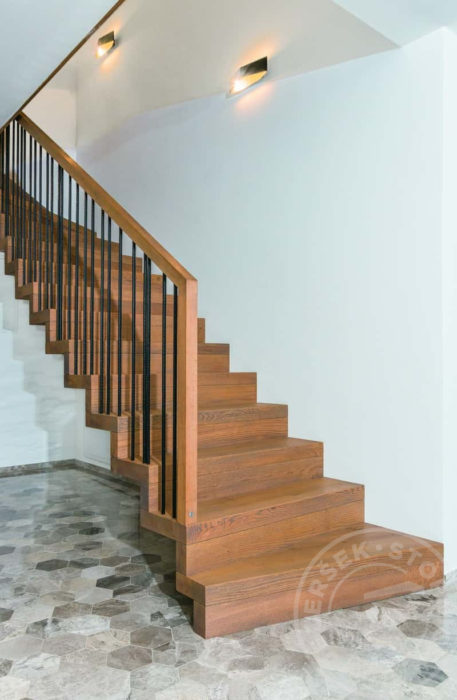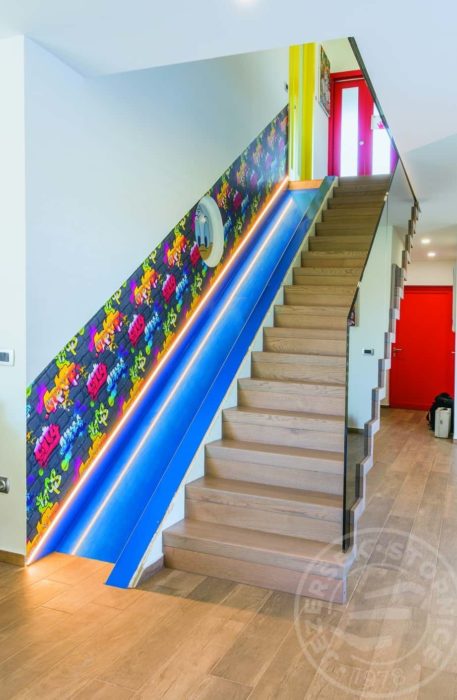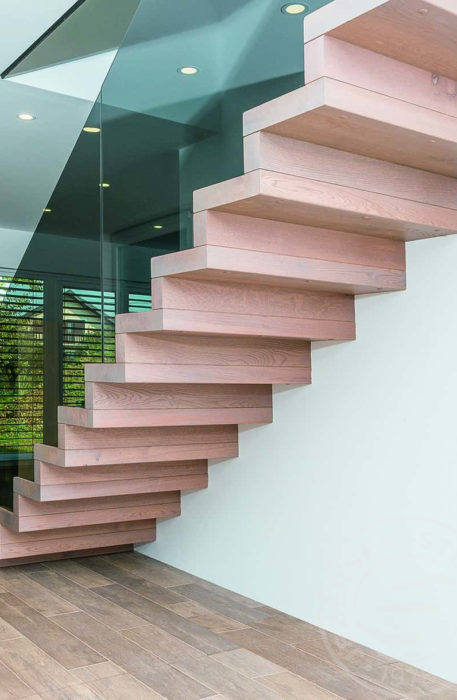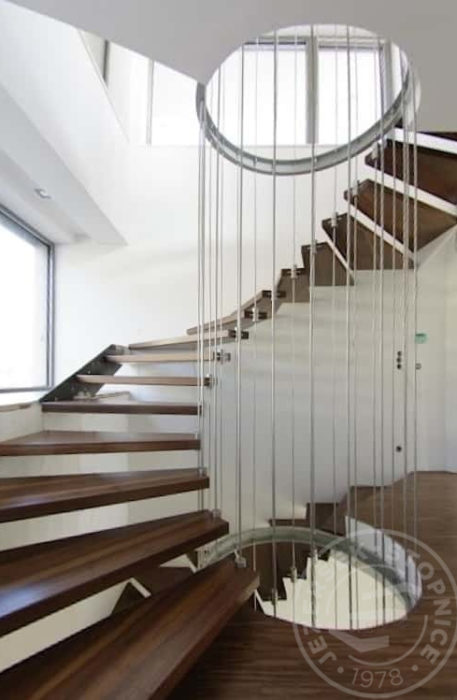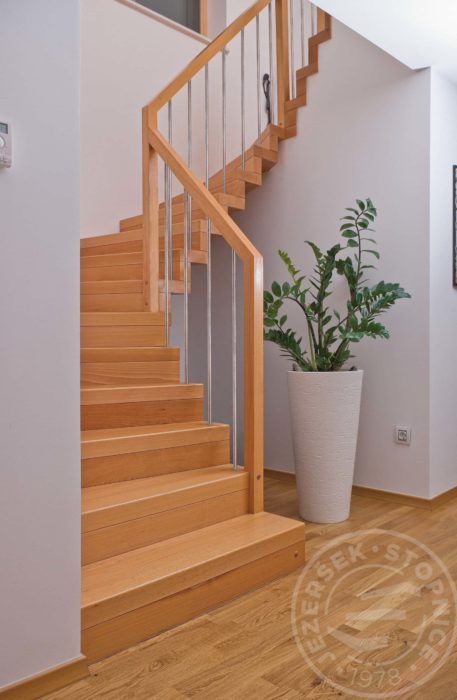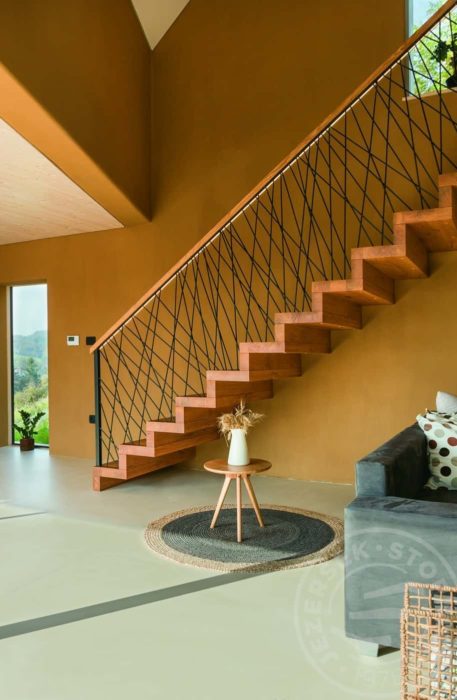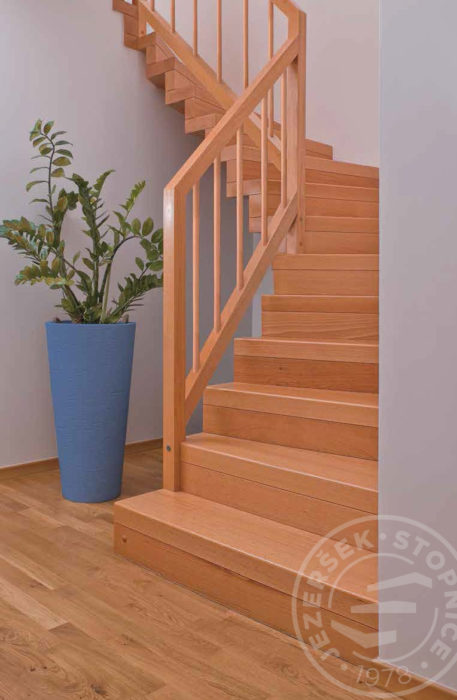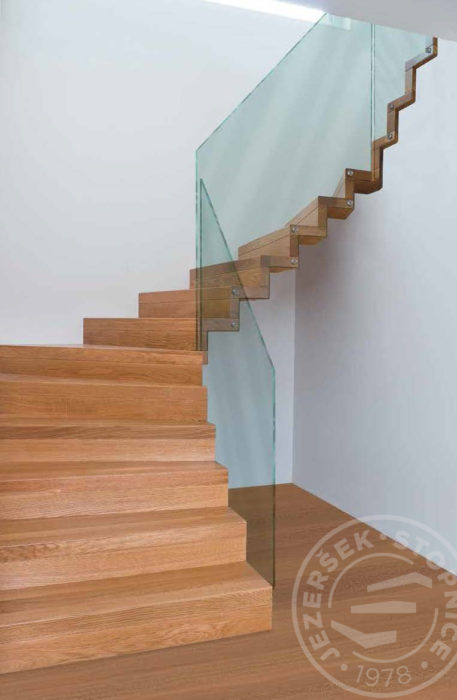
Spiral stairs
Spiral stairs are a special type of self-supporting stairs that usually draw attention in the middle of a room. The steps or, rather, the treads radiate around a supporting wooden or metal pole, but the load-bearing function can also be given to the banister. They are an excellent choice for apartments where space is at a premium, as this type of staircase takes up far less floor area in total compared to others.

Concealed stringers
Depending on the design of the load-bearing wall, concealed stringers are also an option. This actually involves installing metal elements into the wall onto which the wooden treads are then attached. This creates the impression that the stairs are floating. Stairs with no visible stringers allow the space below them to be utilised to the maximum, but due to the complexity involved, it is ideal if such stairs are envisaged already during the building construction stage.

Aesthetics and functionality go hand in hand
We always make sure that the staircase will take your breath away at first glance and then pamper you with its functionality and high quality every day. Having an ideal rise/run ratio of the stairs ensures comfortable walking, while an appropriate width of the staircase allows for unhindered movement of furniture between floors.

Thoughtful details
Sophistication is in the details. Every solution is examined to see whether it suits your home 100%, for example the way the glass is installed, the location of the lighting or the edging design.

Completeness as a set
Our work does not end with the last stair. To give your interior a complete, rounded look, we can also provide:
– banisters on the stairs or gallery
– handrails
– linings
– wall mouldings
– parapet wall covers
– staircase lighting
Banisters
Sometimes a new banister is all it takes to make an interior feel fresh again. We can make individual banisters or banisters in combination with wooden stairs. There are virtually no limits to the combinations of materials that can be had. Wood, metal (stainless steel, brass), glass, marble, rope… all can be used to create harmony and to improve the general ambiance of an interior space.



Most commonly used types of wood
We use both domestic and foreign types of wood for stairs.
When making the choice, we always consider the materials and style of the nearby furniture and floors, and to a large extent our decision is also based on the expected frequency of use of the staircase.
The most commonly chosen types of wood include oak, beech, cherry, maple, ash and walnut, which we source as much as possible from the domestic market.

Oak

Beech

Ash

Walnut

Maple

Cherry
Good to know
What else is important for the long durability of stairs?
Appropriate indoor climate is an essential condition for the long durability of wooden stairs.
Stairs made from solid wood do best in conditions that are generally recommended for living spaces: relative humidity of 45–60% and air temperatures of 20–23 degrees Celsius. When humidity is too low or too high, cracks and other deformations appear in the wood due to shrinkage and expansion.
How to properly care for wooden stairs?
To maintain the protective layer of the varnish or oiled surface, use the care products intended for this purpose.
In cases of greater wear of the varnish or oil, the surface must be restored by re-applying the surface protection material.
What is the right way to clean wooden stairs?
It is especially important that any sand and other small particles are regularly removed from the stairs, as they will damage their protective layer and the wood. Any liquid spills must also be wiped off from the stairs immediately.
For dry cleaning, use a vacuum cleaner with a soft brush or a duster so as not to damage the protective layer on the surface of the stairs.
If wet cleaning is required, wipe the stairs with a soft damp cloth that is still dry enough to not leave any wet marks behind. You can also use a mild detergent that is suitable for wooden surfaces.
Steam cleaning of varnished and stained surfaces is not recommended, as it would damage the protective layer.

